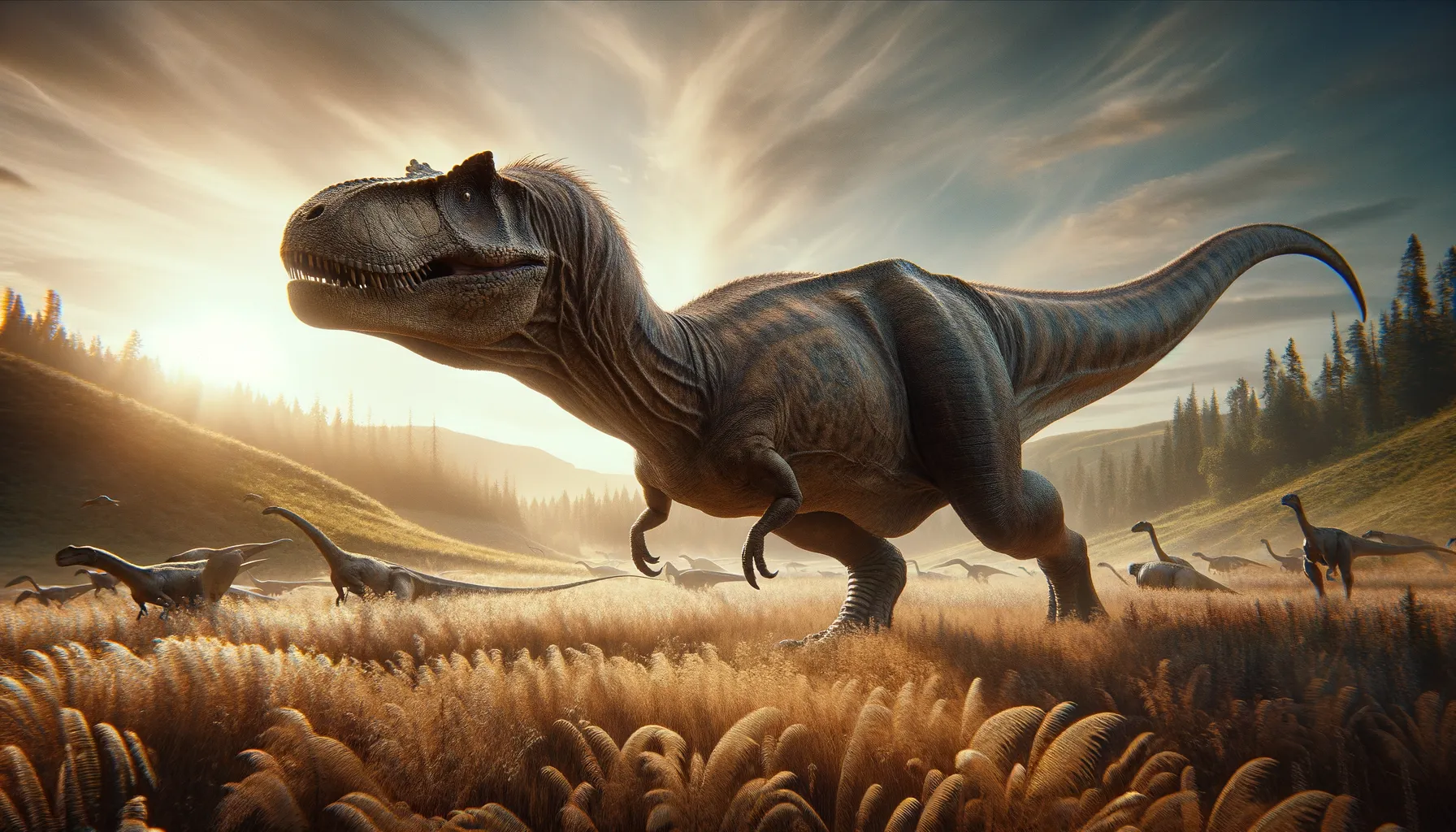
Gasosaurus
Mid-Jurassic predator with a gas-powered name!
Period
Jurassic
Length
About 4 meters long.
Height
Roughly 1.8 meters tall.
Weight
Approximately 300 kilograms.
The Gasosaurus was a medium-sized theropod dinosaur that roamed Earth during the Middle Jurassic Period, around 164 million years ago. Named after a gas company due to the fossil site's location, it was a bipedal predator with strong legs, indicating it was built for running. Its fossils were primarily unearthed in China, offering valuable insights into the diverse dinosaur fauna of the time.
Diet
Gasosaurus was carnivorous, preying on small to medium-sized animals. Its strong jaws and sharp teeth were well-suited for seizing and consuming flesh.
Hunting
Gasosaurus likely hunted alone, stealthily stalking its prey through dense foliage. Once it spotted a meal, it used its quick bursts of speed to ambush and overpower its target.
Environmental challenges
During the Middle Jurassic, Gasosaurus faced fluctuating climates with wetter conditions. Vegetation was dense, sometimes making it challenging to hunt or evade larger predators. It adapted to these changes with its agile build and carnivorous diet, capable of shifting habits as necessary.
Speed
Considered moderate, capable of quick bursts.
Lifespan
Exact lifespan is unknown, estimated at several decades.
First discovery
Discovered in China in 1985 by paleontologists during fossil surveys.
Fun Facts
- Gasosaurus is named after a gas company because its fossils were discovered during the construction of a gas facility in China.
- It lived approximately 164 million years ago during the Middle Jurassic period.
- Gasosaurus is believed to be a meat-eating dinosaur, or carnivore, that roamed parts of what is now Asia.
- Despite its fierce name, Gasosaurus was relatively small compared to other dinosaurs, standing about 10 feet tall and 13 feet long.
- Very few fossils of Gasosaurus have been found, making it a somewhat mysterious dinosaur to paleontologists.
- The exact classification of Gasosaurus is debated, as its incomplete fossils make it difficult to place precisely within the dinosaur family tree.
- It's estimated that Gasosaurus weighed about 330 pounds, roughly the same as a full-grown reindeer.
Growth and Development
Gasosaurus, from a young age, would've likely grown steadily into a formidable predator. Juveniles required ample food to support their growth spurts. Like many theropods, they probably developed hunting skills early to ensure survival.
Habitat
Gasosaurus lived in lush forests of what is now China, with abundant plant and animal life. These environments provided plenty of resources but also significant competition from other theropods. Rivers and floodplains were common features in its habitat, influencing its foraging behaviors.
Interaction with other species
Gasosaurus coexisted with various herbivorous dinosaurs, some of which were prey. It faced competition from larger predators but maintained its niche, potentially scavenging when opportunities arose. Its interactions would have included both direct confrontations and passive coexistence.
Natural lifespan
Gasosaurus's natural lifespan is presumed to be around 20 to 30 years.
Reproduction
Gasosaurus laid eggs, possibly in nests constructed in secluded environments. Parental care remains speculative, but juveniles likely received protection until they could fend for themselves or join hunting efforts.
Social behaviour
Largely solitary, Gasosaurus might have experienced territorial disputes. Its need for food and territory would influence its interactions, requiring occasional teamwork in raising young or shared hunting temporarily.
Fossil locations
Gasosaurus fossils have primarily been found in the Dashanpu Formation in China. These findings have been crucial in understanding the diversity to the Middle Jurassic ecosystem in the region. Fossil evidence provides an essential link to other theropods that thrived in similar environments.
